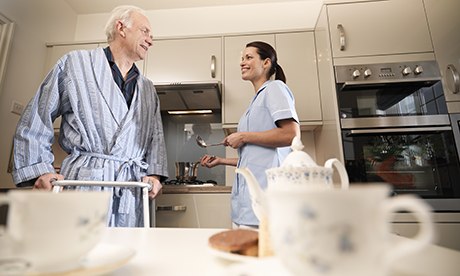
Stephen Manning was head chef at a French restaurant in Notting Hill for 25 years. Today, he struggles to make a cup of tea. His wife Joanne intervenes when he pours water into a cup without a tea bag or forgets to add milk to his cereal. But when she is not around, life can be very difficult. It is not that Stephen doesn't understand what he is trying to do. He knows what a cup of tea looks like. The problem is that he often struggles to remember the steps to make the perfect brew.
Last year, Stephen was one of the 150,000 people in the UK who suffered a stroke, caused by a lack of blood getting to parts of the brain. The classic symptoms associated with having a stroke are physical. Patients can end up with paralysed limbs and problems with speech. But for Stephen, something much more subtle underlies his problems – and he is not alone.
Of stroke patients, 68% go on to develop apraxia and action disorganisation syndrome (AADS). Sufferers have difficulty in sequencing previously automatic actions, from washing themselves to making the bed. Although the patient's movement is affected, AADS is primarily a disorder of the mind. Naturally people want to cure what they can see. AADS is hard to identify and although it is common, it has been overlooked in favour of physical stroke rehabilitation.
Improved brain-scanning techniques mean it is easier to identify AADS. And now, psychologists and engineers have joined forces in a project that aims to help improve the lives of the thousands of people who suffer from this condition.
"Patients may have done basic tea-making tasks in hospital, but there is nothing to aid cognitive rehabilitation after that," says Amy Arnold, a PhD researcher at Birmingham University who is working on the project, called Cogwatch. It aims to restore patients' independence by developing personalised rehabilitation systems that can be installed into their homes.
These systems will silently monitor patients as they go about their daily lives and provide advice to guide them when they make errors. It is hoped that patients will learn to sequence tasks correctly as a consequence.
But designing this rehabilitation system has proved a challenge. Ultimately, patients will wear a watch that will monitor their movements. Electronic devices will be installed into everyday objects in their homes, such as a toothbrush or a vest. These will transmit information wirelessly to a central system. This will guide patients if they make errors, through sounds, vibrations or a visual screen.
Manish Parekh, a PhD student who is part of the project, explains: "We are incorporating sensors that monitor grip strength or motion into everyday objects. This is the same technology used in mobile phones that detect which way up they are being held."
Another challenge is combining technology with the research carried out by the project's psychologists. "We are trying to learn how healthy people normally behave and the kind of errors that occur in stroke patients," explains Amy.
To monitor how tasks are normally undertaken, the team has studied healthy participants. Sensors that can monitor complex movements were used to examine how they completed several tasks. This information can then be used as a comparison to AADS behaviour.
Brin Helliwell, who had a stroke a year ago, is participating in the research: "I benefitted hugely, psychologically, in terms of motivation and coming to understand what had happened to me," he said.
Not everyone will welcome the new technology with open arms. Many stroke patients are above the age of 65 and may struggle to integrate technology into their everyday lives. "It has to be friendly enough to make patients want to use it," explains Amy. "They don't want lots of gadgetry and to press lots of buttons, or for it to take over their lives."
This is the reason Cogwatch is working closely with the Stroke Association. "It is great that they are addressing this problem but a system like this will only succeed if it is usable by patients," explains Dr Clare Walton, the Stroke Association's Research Communication Officer. "One of the concerns with this project is that the tech group will go nuts, developing all this amazing technology, but that it will be unusable – like developing a vibrating watch for a patient with sensation problems."
With the focus still on physical rehabilitation, this project, though still in its infancy, is quietly tackling AADS head-on for the first time. The disorder affects a massive percentage of stroke survivors, and for people like Stephen Manning that fight could not have come soon enough.
• This piece was a winner of the Wellcome Trust Science Writing Prize 2013.

